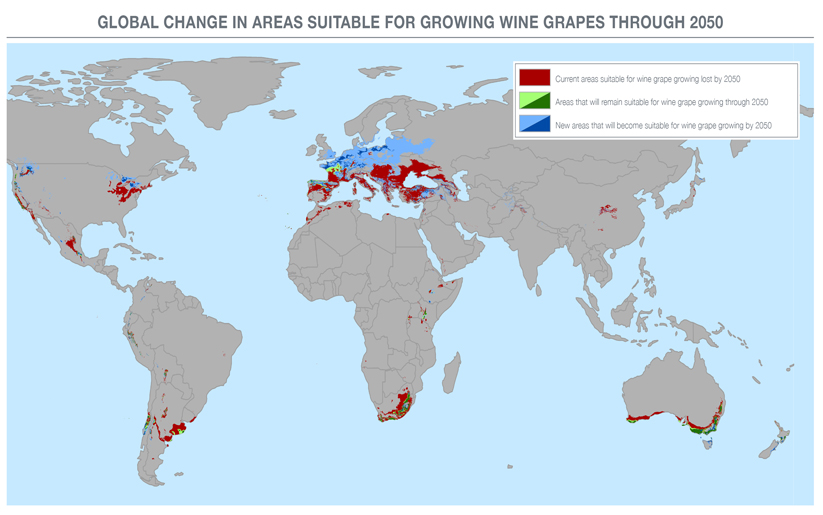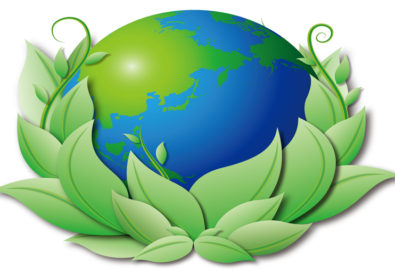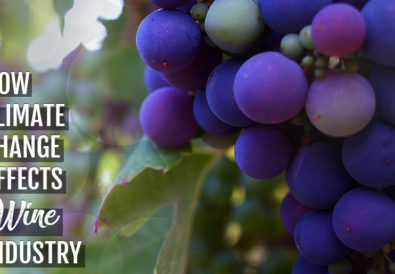Can you imagine a future with no wine? According to a study published in PNAS.org, area suitable for viticulture would decrease 25% to 73% in major wine producing regions by 2050, due to climate change (Hannah, et.al., 2013). Most scientists believe that climate change is brought about by continuing increase in carbon pollution, vis a vis, its worst effects can largely be avoided if we manage carbon pollution by reducing it to an acceptable level. Save for some conspiracy theorists who believe that climate change is a myth, most believe that it is indeed happening and that its impact is drastic enough to affect our food supply in general.
Australian winegrape industry and climate change
The Australian government tells us that climate change might cause more frequent and more extreme weather events including heatwaves, storms, cyclones and bushfires; a continued decline in rainfall in southern Australia; and higher temperatures leading to decreases in water supplies. These changes are disastrous to our winegrape industry. Viticulture is very sensitive to climate, in fact, a study published by climate scientist and viticulturist, Dr. Leanne Webb, claims that climate change has caused grapes to mature early in southern Australian vineyards.
According to the Australian Bureau of Statistics:
- Around 148,509 ha are cultivated for winegrapes in Australia
- The total winegrape production in 2012 was 1.58 million tonnes (3.2% increase)
- South Australia remained the largest producing State with 768,918 tonnes
The Australian Bureau of Agricultural and Resource Economics and Sciences (ABARES) predict that annual winegrape production could increase by 5% to 6% if favourable seasonal conditions are met.
Adapting to climate change
According to the Department of Industry, Innovation, Climate Change, Science, Research and Tertiary Education, Australian scientists are at the forefront of global efforts to understand the science behind climate change. The Australian Climate Change Science Program (ACCSP) is our flagship climate change science program, running continuously since 1989 and is a key driver of Australia’s climate change research effort. Myth or not, the Australian government is taking the global threat of climate change seriously.















